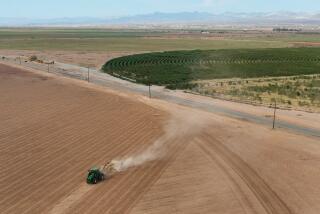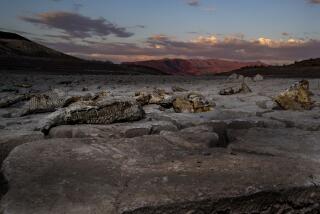Winter is shrinking, study finds, posing new fire and water risks
Across the mountains of the West, the landscape of winter is changing.
Deep snowpacks that held fast through winter, then melted in a torrent each spring, are instead seeping away earlier in the year. The period of winter weather is shrinking too, with autumn lasting longer and spring starting earlier.
The findings by Amato Evan, a professor of atmospheric and climate science with Scripps Institution of Oceanography, show changes to western hydrology that could jeopardize water resources, flood control, fire management and winter recreation.
His results were published this month in the Journal of Applied Meteorology and Climatology and presented at the American Geophysical Union Fall Meeting in Washington.
Aerial photos and snow surveys illustrate how levels vary from year to year. But Evan’s study looked not only at how much snow there is, but also how it accumulates and then runs off.
Climate models have predicted the snowpack would diminish earlier in the season and melt more gradually as the planet warms. Evan affirmed those projections through an analysis of data from 1982 through 2017.
“There are theoretical models that say as the planet continues to warm, this is what should happen; snow melts earlier in the year, and doesn’t melt as fast as it does in the springtime,” he said. “We went back to the mathematics, and said, that’s actually exactly what we’re seeing.”
The readings come from 400 snow telemetry sensors across the West. They’re made of cushions filled with antifreeze that compress and expand as snow falls and melts, and sensors that record the changes. The data are hard to work with, though, because there’s so much day-to-day variation in storms and snow levels at each site.
“If you’re interested in climate, all those little blips obscure how that is changing over the last four decades,” Evan said.
To address that, Evan devised a mathematical formula to cut through the noise of the data and reveal trends in snowfall and melting. The calculations showed how the whole system was shifting because of higher temperatures.
“If we use the mathematical analysis, it tells you more about physical processes,” he said.
Dan Cayan, a Scripps researcher who studies climate effects on water, wildfire, health and agriculture and was not involved in the study, said those changes could upend water management systems in the West.
“Of course snowpack has traditionally been used as an extra reservoir in the western states, and particularly in California,” he said. “It has some really nice properties, in that it doesn’t melt off until the latter spring and early summer, when there are a lot of water needs, particularly with our agricultural landscapes.”
Moreover, he said, California’s water system is designed to harness powerful storms that pose both risks and benefits.
“Water resources and water hazards are intimately tied together in California,” Cayan said.
Western mountains have historically released their water after winter storms have passed, but with snowmelt and storms occurring at the same time, the risk of floods increases. The near collapse of the Oroville Dam in February 2017 illustrates the kinds of dangers California could face with earlier runoff.
“We’re getting snowmelt at a time when a big storm which has both rain and snow could happen, and could overwhelm the flood control capacity of a given reservoir in that earlier season,” he said. “So that’s a feature of climate change that is really a threat, that water managers are going to have to contend with.”
Catastrophic wildfires are another peril of the changing regimen. Snowmelt dampens the risk of wildfire for California’s forests during spring and early summer. If it runs off sooner, that could leave those woodlands parched and fragile.
“When snow melts earlier in the year ... that means the soils dry out earlier in the year,” Evan said. “That means those forest ecosystems become drier. So in a sense, we can lengthen the fire season.”
Early snowmelt also poses problems for tourism, particularly for mid- and lower-elevation ski resorts, and threatens part of the state’s natural heritage, Cayan said.
“The snowpack is such an iconic feature, for many reasons,” he said.
The study’s findings show that the pace of climate change is now catching up to projections, and can be seen on the ground, Evan said.
“Some of these results really have only been seen in modeling studies,” he said. “The fact that we can see them now in observations means that climate change in the western U.S. is not something we will see in the next 50 years. It’s something that’s happening now. We can see it right now.”
Brennan writes for the San Diego Union-Tribune.
deborah.brennan@sduniontribune.com
More to Read
Sign up for Essential California
The most important California stories and recommendations in your inbox every morning.
You may occasionally receive promotional content from the Los Angeles Times.










